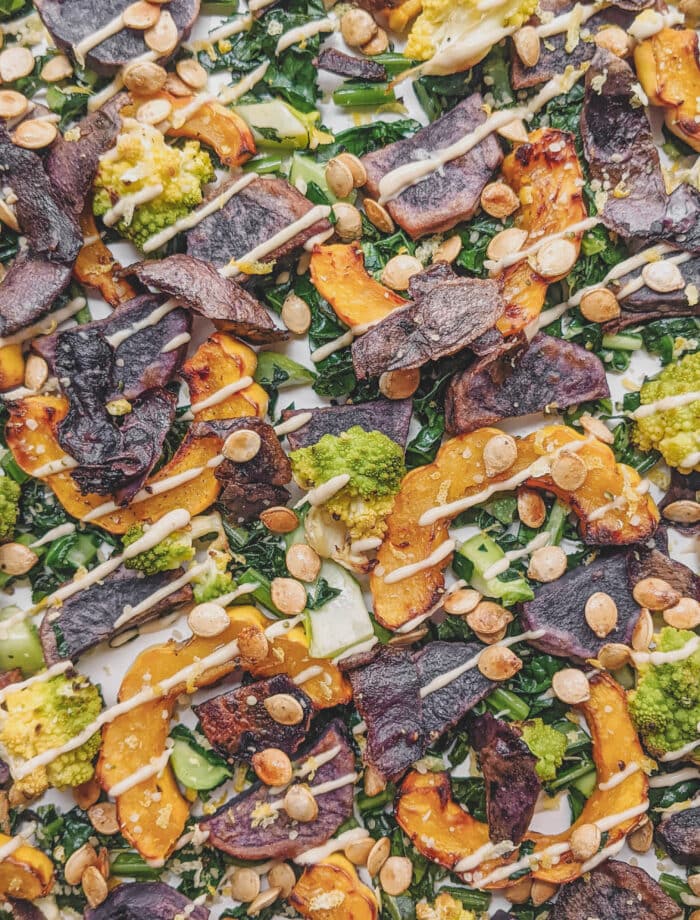For optimal results, get your hands on the freshest cabbage possible–ideally organic. Avoid salt with iodine or other added minerals. I used a combination of smoked sea salt and Himalayan salt, which are both good options. Kosher salt is always a good option. To get a well-salted, crispy ferment every time, measure your salt by multiplying the total weight of your veggies by 2%. For example, I had about 900g of veggies so I used 18g of salt. Too little salt can encourage mold growth and cause other problems while too much salt will inhibit fermentation. If you don’t have a scale you can follow the 2 tsp for every pound of veggies rule of thumb, but keep in mind that different salts vary wildly in volume by weight.
I’ve found that the ideal place to ferment is out of direct sunlight, draft-free and between 65°F and 72°F. Sauerkraut usually ends up in my bedroom closet because the temperature there doesn’t fluctuate as much as it does in my kitchen or living room. Too cold an environment will impede fermentation, but too much heat can produce a kraut that’s too mushy.
I left this batch to ferment for 2 weeks, but you could get away with 1½-6 weeks depending on your preference. I burped (slightly opened lid) about once a day for the first week, had small amounts of “spillage” –no more than ½ tsp each– occasionally, and had to refill with a 2% brine once towards the end of the process. It turned out perfectly, each ingredient melding together to create an entirely new flavor that’s funky, complex and deeply satisfying. And if something goes totally wrong? No biggie! Hopefully you learned something for next time around. I love to add sauerkraut to salads, grain bowls, sandwiches, rye crispbread, or thick slices of homemade sourdough with a layer of creamy cashew cheese sauce, plant-based mayo, carrot top + kale dip, or hummus. The options are endless!









